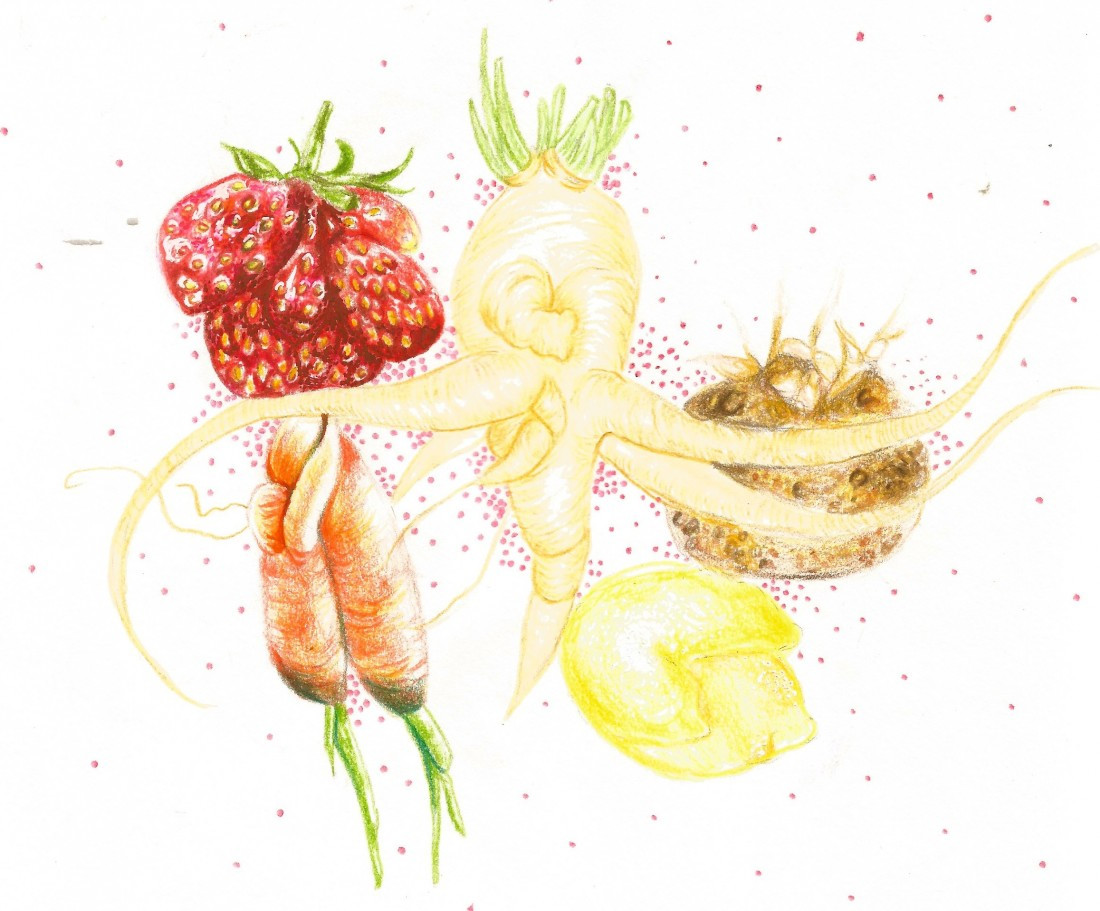Fugly foods
What buying an ugly carrot has to do with world hunger

Over the past year Loblaws has been releasing their line of “Naturally Imperfect” produce to grocers in Quebec and Ontario, and now it’s made its move to Winnipeg.
Produce items that would typically never make it to grocery stores because they are undersized or oversized, blemished, or misshapen are being offered at a discounted price of up to 30 per cent due to these imperfections. Though this program has been met with great popularity in the stores where it’s been introduced, customers are buying into more than just a cheap deal.
What we see as we peel back the layers of this discount is a market driven by cosmetic appearance of food rather than the desire to produce efficiently and prevent waste. Why is it that only as we are seeing prices for produce increase are grocers exposing and finding solutions to food waste practices that have been happening for years?
According to Statistics Canada’s consumer price index published in a Globe and Mail article, “between January 2015 and 2016, Canadian food prices rose four per cent. But fresh fruit and vegetables showed some of the biggest increases, shooting up 12.9 and 18.2 per cent respectively.”
How is this possible when, according to a National Geographic article published in March 2016, globally some 2.9 trillion pounds, or about one third, of food never gets consumed, and from that, 46 per cent of fruits and vegetables never make it from farm to fork?
This article, titled “How ‘Ugly’ Fruits and Vegetables Can Help Solve World Hunger,” explains how the waste isn’t just lost in pounds of food. It states that “if food waste were a country, it would be the third largest producer of greenhouse gases in the world, after China and the U.S.”
What we see is cheaper produce, but what we are getting is a terrifying insight on food waste system that contributes to climate change, world hunger, unprofitable and unsustainable farming, poor socio-food relations and so much more.
Sylvain Charlebois, a professor of food distribution and policy at the University of Guelph, says discounted fresh produce is more lucrative for farmers than the alternative and seemingly efficient food processing of discarded produce which still actually accounts for about 18 per cent of all waste.
As unappealing as our “ugly” produce may be, lowering our visual standards for food is one way we can begin to combat issues of waste on so many levels.
Still, in doing this we must continue to consider food waste from more angles than what is just presented to us in grocery stores. Food waste is an alarmingly diverse and complex issue that affects the food security of many today, and inevitably many more in our future.
With an estimated global population of more than nine billion people by 2050, the demand of global food production increases by 70 to 100 per cent. Discount grocery shopping is great if it helps capture and use wasted produce, but we should be nowhere close to satisfied in knowing that buying an ugly carrot from the 30-per cent-off bin is our biggest contribution to tackling our global food, economic, and environmental crises.
Talula Schlegel purchases 78 per cent of her spring wardrobe from Joe Fresh each year. She is a perpetual student and former UWSA environmental ethics co-director and is studying environmental sciences at the University of Winnipeg.
Published in Volume 70, Number 24 of The Uniter (March 17, 2016)







